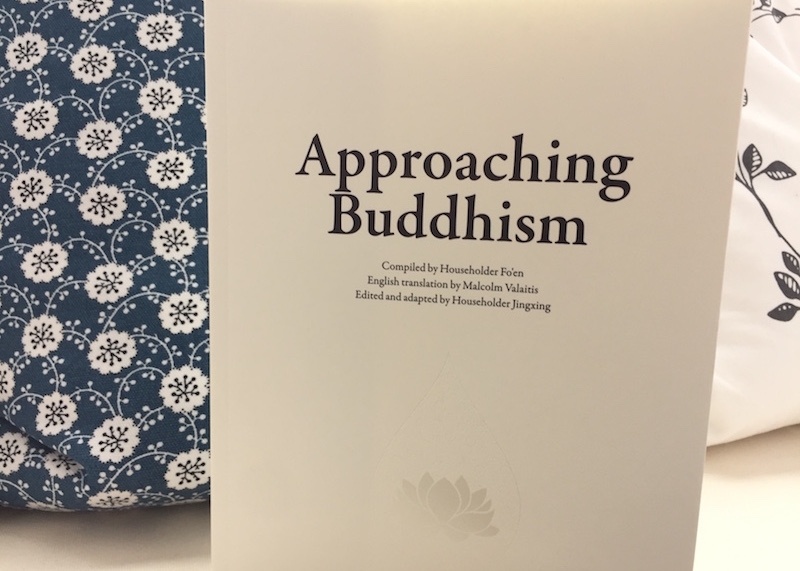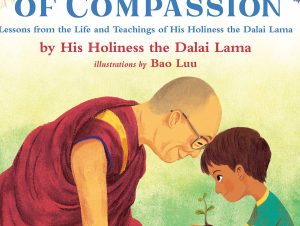It is a cliché to say that publishing an introductory textbook to a vast and philosophical subject like Buddhism is much harder than some writers and editors may assume. This is especially true when the introductory publication is not even intended to function as a textbook for a school course or undergraduate module, but rather as an accessible and digestible companion for the open-minded seeker.
An introductory book of this sort has a daunting list of criteria to tick off. How is it supposed to balance hard knowledge and erudition with the warmth, conviction, and assurance that can be found in fellow practitioners or teachers who are out to help the reader learn about the tradition and find their ground? How can it legitimately and confidently present and defend its perspective (for its views inevitably reflect those of a certain school) while maintaining an objective and scholarly communication of the history and heritage of the overall religion? Introductory publications need to overcome a host of potential tensions as their authors engage in an editorial tug-of-war between oversimplification and overcomplicating, or between spiritual conviction and detached observation.
Approaching Buddhism is a brand new English-language volume released by the Taipei-based Pure Land Buddhism Publishing Co. Compiled, translated, and edited by a team of lay Pure Land Buddhists, it, does well in balancing the potential tensions I have described. It gives an extensive outline of the general objective of Buddhism, while also highlighting the unique perspective of the Shandao (or pristine) lineage of Pure Land Buddhism (named after Master Shandao (613–81), the de facto founder of Pure Land thought and practice).

I see the book as being divided into the parts before Section 6.4 and the chapters afterward. I will explain why I make this division below, but chapters 1 to 3 set out the magnitude of what is at stake. We are destined to die—“and in the face of death all the world’s happiness becomes cheap and tawdry decoration” (p. 3)—and this world is fundamentally one giant illusion, which not only means we are bound to and create falsehoods, but also that we distract ourselves with these illusions: “we live under a fictitious identity in a world that is ultimately unreal as a fairy tale.” (p. 4)
Our exploration of Buddhism is therefore not merely an intellectual game or pursuit of superstitious fortune. It is a journey to resolving our profoundest existential crises. Throughout the book, stories are used to illustrate points of teaching: the example of John D. Rockefeller is given to underscore the futility of being attached to money, and the certainty of death is highlighted in the classic Buddhist tale of Kisa Gotami (Kosi Gotama in the book). Sections 2.1–3 and 3.1–2 highlight especially eloquently and soberly the truth of our troubled human condition.
Before Section 6.4, the author provides a comprehensive but straightforward explanation of why Buddhism matters. The book does not shy away from critiquing contemporary stereotypes of Buddhism, many of which mischaracterize the religion as superstitious, passive, or unsuitable for modernity. Approaching Buddhism’s refutation is decisive and inspiring: “Buddhism is the teaching of the World-Honored One. Belief in Buddhism is belief in the truth of the Buddha’s teaching, the taking of refuge in the Buddha, and reliance on his example and his store of karmic merits. Finally, belief in Buddhism means becoming as he is: a perfect, all-wise, all-compassionate, consummate Buddha.” (p. 51)
The purpose of examining our existential circumstances has been to build the necessary resolve to take action. Section 6.4 finally poses a major question to the reader: if you have read this far, you surely feel some interest in doing something about your samsaric predicament. You are interested in learning more and perhaps even practicing, but which path should you choose? It is, after all, not wise to mix practices: “Devotedly practicing a single method is not limiting oneself; rather, it is a necessity of religious practice. Though all methods lead to the city of nirvana, a practitioner cannot enter through many gates simultaneously.” (p. 125)
One key problem is that the Buddhist teachings are simply too difficult for us. In today’s world of infinite distractions, attachments, and iniquity, “spiritual attainments through dependence on the Sagely Path are as rare as phoenix feathers or unicorn horns.” (p. 137) The Sagely Path is an umbrella term for any Buddhist path that is powered by self-power. Self-power relies on a fairly conventional understanding of Buddhism: upholding the precepts, study, and meditation.
Yet a realistic assessment of one’s times and circumstances—specifically, the 21st century—should lead one to conclude that even the basic tenets of self-power or the Sagely Path sound positively utopian: abandoning egocentric views, blocking the rising of all desire, extinguishing greed, hatred, and ignorance, and so on. Human beings, including 99.99 per cent of Buddhist practitioners, are more or less mediocre beings. It is, put bluntly, egotistic to think that one can attain enlightenment through self-power (Section 7.4 examines this issue further).
Through other-power, we rely on the incomparable power of a Buddha to liberate us. Pure Land Buddhism is, in this sense, a devotional tradition. In theory, there are many paths of other-power. One could technically devote oneself to Akshobhya, the female Buddha Tara, or the many other Buddhas of the Mahayana pantheon. But Amitabha’s Pure Land deserves concentrated worship because he has tailored the Western Land of Bliss specifically for us flailing, iniquitous beings.
From Section 6.4.3 onwards, Approaching Buddhism launches into a spirited presentation of Pure Land’s suitability for our times: “Even if those who invoke the Buddha have not yet cut the root of their suffering, as long as they trust in Amitabha and recite his name, they will be received and welcomed by the Buddha at the end of this life, be reborn in the Pure Land, and once there, speedily attain Buddhahood.” (p. 135) The reason why we can be assured that reciting “Namo Amitabha Buddha” is not only the most convenient (pp. 176–8) but also the most effective way to liberation is due to Amitabha’s Fundamental Vow (his 18th Vow as recorded in the Infinite Life Sutra), which promises Amitabha’s salvation in this life to beings who invoke his name. The book continues deeper into more advanced Pure Land teachings, with Chapter 9 providing moving and helpful advice on end-of-life care.
There are few English-language books on pristine Pure Land Buddhism that offer the same quality and detail as this one. If you wish to understand the Pure Land worldview and the path of Amitabha’s teachings on the terms of the pristine Pure Land practice, look no further. The thoughtful seeker will (often to their own frustration and bewilderment) inevitably face spiritual questions and struggles. Approaching Buddhism is a helpful companion that will provide pithy reminders of the core doctrinal points that point the way to the Pure Land.
The book’s mission is simplicity, a point that it reiterates through a quote from Master Shandao: “Believe and teach others to believe; difficult as it may be, Transmitting broadly his great compassion is the way to repay the grace of the Buddha.” (p. 224)
Amitabha is always present, within us and all around us. We need only invoke his name.
References
Approaching Buddhism. 2017. Compiled by Householder Fo’en. Translated by Malcolm Valaitis. Edited by Householder Jingxing. Taipei: Pure Land Buddhism Publishing Co.
Related features from Buddhistdoor Global
Teachings of Amitabha (column)














